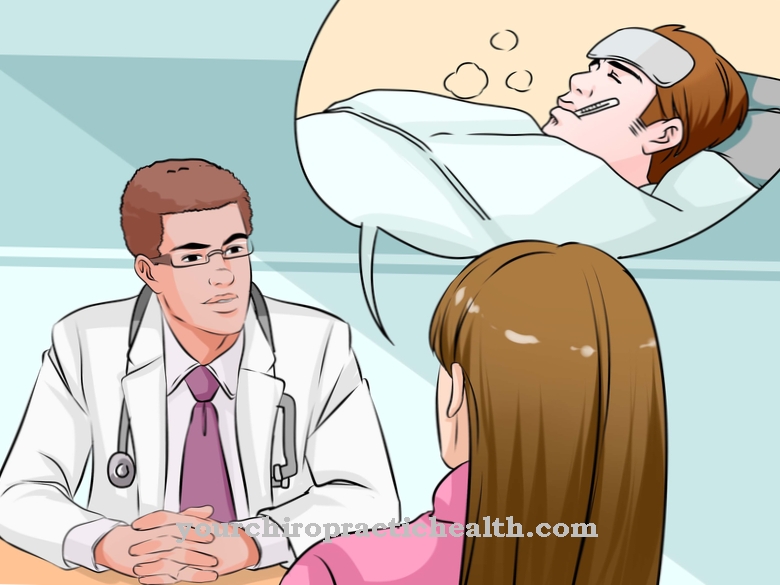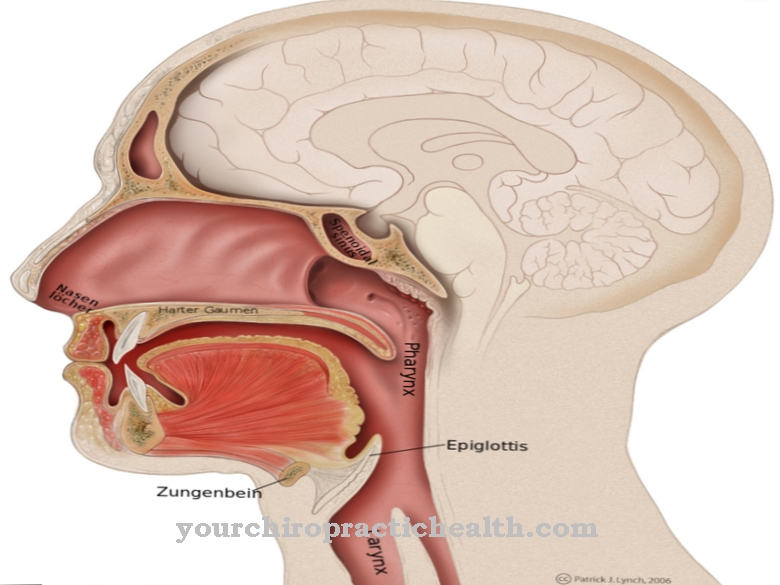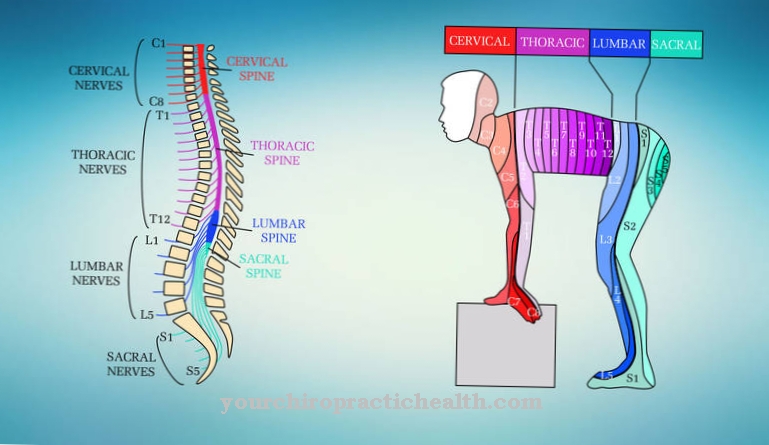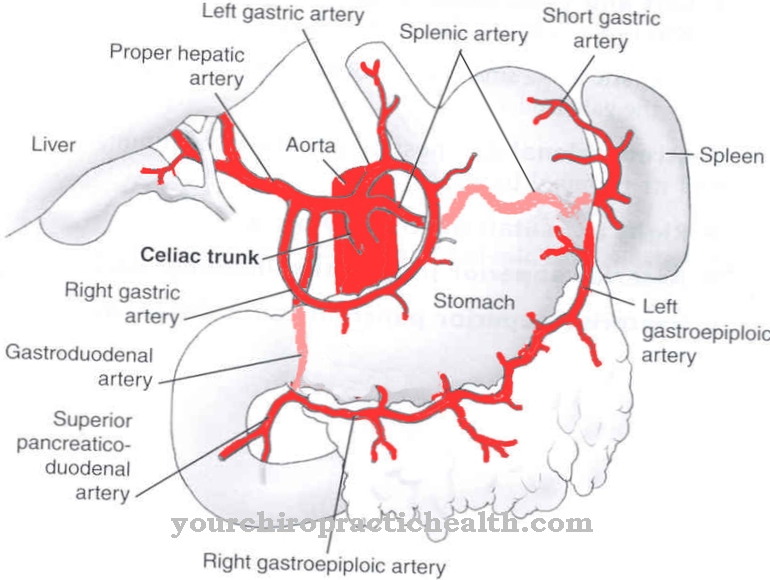As Hair cell are sensory cells that are located in the inner ear in the cochlea and in the balance organs. They are assigned to the category of mechanoreceptors because they translate the sounds and vestibular messages arriving as mechanical stimuli into electrical nerve impulses using sensory hairs and pass them on to the brain via the vestibulocochlear nerve (8th cranial nerve) and can also receive signals from there.
What is the hair cell?
Hair cells are sensory cells that can convert mechanical stimuli into electrical nerve impulses by deflecting their kinocilia and are therefore classified as mechanoreceptors. The term hair cell is a bit misleading because it refers to the “sensory hairs” Stereocilia and Stereovilli, not hair- or flicker-like structures.
Rather, they consist of actin filaments, a structural protein that is often found in the body and, in contrast to cilia (e.g. in the external auditory canal), have no basal body. As soon as the stereocilia are mechanically bent, they generate an electrical signal that is transmitted to the brain via the vestibulocochlear nerve (8th cranial nerve). At the same time, when the stereocilia are deflected, neurotransmitters are released at the opposite end of the hair cell, which make it possible to communicate with interconnected interneurons via synapses.
Hair cells are mainly located in the cochlea, where they transform mechanically incoming sound waves into electrical impulses and at the same time release messenger substances. Further hair cells are located in the vestibular organs, in which they “translate” mechanical translatory and rotational accelerations in all possible directions in three-dimensional space into electrical nerve impulses and messenger substances.
Anatomy & structure
With the hair cells located in the cochlea, a distinction must be made between the total of 3,500 inner and around 12,000 outer hair cells, each of which has different functions. Hair cells consist of the cell body from which "hair bundles" protrude at the upper end, which consist of a stereocilia and stereovilli. Each individual hair cell is connected to the fibers of the vestibulocochlear nerve.
The inner hair cells are predominantly afferent fibers that carry messages from the cells to the corresponding brain centers. The outer hair cells mainly have efferent fibers, so they receive instructions and information from the brain. The individual stereovilli of the hair cells, which are located in the cochlea, are connected to one another at the tips (tip links). This is not the case with the hair cells in the vestibular organs.
The hair cells of the 3 semicircular canals for the perception of rotational accelerations are located in a thickening at the base of each semicircular canal. The tips of the stereocilia protrude into the gelatinous cupula and are bent and excited by a rotational acceleration in the respective plane due to the inertia.
In the otolith organs Sacculus and Utriculus, the gelatinous substance into which the stereocilia protrude is weighed down by so-called otoliths, which consist of calcium carbonate crystals, and brought out of their rest position due to linear accelerations due to the inertia, so that the stereocilia are bent and the mechanical stimulus in transfer electrical signals.
Function & tasks
The basic function and task of the hair cells is to convert mechanical stimuli into electrical nerve impulses and at the same time to release neurotransmitters in order to communicate with interneurons via synapses. The hair cells, which are located in the cochlea, have the task of converting incoming sound signals into electrical impulses in such a way that the hearing centers can define the pitch, timbre and volume.
The sensor system uses an active amplifier to determine the pitch. To put it simply, the outer hair cells can amplify the incoming sound through their own resonance and activity, which is then converted into an electrical signal by the inner hair cells and passed on. The hair cells in the vestibular organs have the task of translating accelerations into electrical impulses. Here, too, each individual hair cell is connected to afferent fibers of the vestibulocochlear nerve so that the centers of movement in the brain can “calculate” in which direction the body is being accelerated translationally and / or rotationally and how strongly.
The vestibular organs cannot detect uniform movements (speed). Braking is felt like acceleration in the opposite direction. Due to the mass inertia principle, which the vestibular organs use, a false report is given for a short time after each stop of a stronger acceleration, because the endolymph in the semicircular canals needs more than a second to be at rest after an abrupt stop, for example a pirouette, due to the mass inertia come. The phenomenon manifests itself in a brief feeling of dizziness after a quick turn of the body.
You can find your medication here
➔ Medicines for earache and inflammationDiseases
Possible causes for a functional impairment up to total functional failure of the hair cells are problems in the upstream mechanical processing of the incoming stimuli or problems with the hair cells themselves or functional disorders in the downstream nervous processing of the hair cell signals.
Temporary functional impairments in the preliminary mechanical stage can typically be caused by damage to the eardrum, blockage of the external auditory canals or an otitis media in the case of the sense of hearing. In the case of the sense of balance, in addition to an inflammation of the inner ear with effects on the vestibular organs due to medication or drugs (especially alcohol) due to a change in the viscosity of the endolymph in the vestibular organs, unusual movements can occur in the "mechanical" preliminary stage.
Diseases that start from the hair cells themselves are extremely rare and virtually unknown. However, depending on the duration and intensity of the extraordinary noise, the hair cells in the cochlea can cause temporary or permanent damage to the hair cells. In contrast to some bird species, human hair cells cannot be regenerated. In addition, hair cells can be irreversibly damaged due to circulatory disorders due to a lack of oxygen.
Functional disturbances in the nervous processing of the hair cell signals can be caused by lesions of the vestibulocochlear nerve or by hematomas in the brain or by brain tumors or other nervous impairments.
Typical & common ear diseases
- Ear flow (otorrhea)
- Otitis media
- Ear canal inflammation
- Mastoiditis
- Ear furuncle













.jpg)

.jpg)
.jpg)











.jpg)